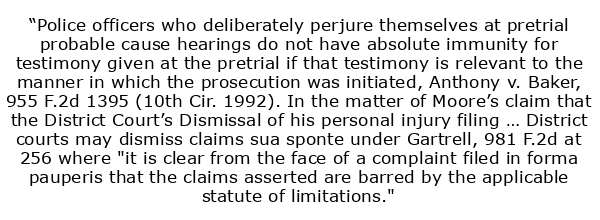You know the drill - spend long hours poring over casebooks and writing case briefs, and in the end, it counts nothing toward your final grade. The final exam is what matters, 100% of the time. Whether it's for a required assignment or a personal project, it is important to learn how to write a case brief perfectly.
Case briefing is an excellent way to analyze how courts apply rules of law objectively and rationally.
In this article, you will learn all about case briefs, why they are important, how to structure them, and how to write each section of the brief.
But what if you don't have the time to do all that?
Then skip all this and order case brief writing services from Help for Assessment at discounted rates. Our case brief experts will have your brief done and polished in record time and free you to focus on more important things, like passing the said exam.
If you still want to learn all about writing a good case brief, read on to the end. You will also get a case brief sample format to help you write your own.
What Is a Case Brief?
A case brief is a written summary of a judicial opinion. It is a dissection of a case as presented in court with regard to the rule of law.
The aim of a legal brief is to help students study for final exams and understand the intricacies of law and the judicial system.
The word ‘brief’ in case brief is misleading because a brief is actually a persuasive formal argument submitted to a court in support of a client/defendant. You can also think of a case brief as a legal brief or case summary to understand what it is.
Why Write a Case Brief
Case briefs are great for law students because they help them to learn case analysis and objective legal reasoning. These skills are crucial to surviving in the legal world once they are out of school. Not to mention that they are a way to help them pass their final examinations.
They also help the student to store a treasure of useful cases and facts to help them in discussions and later in life. Thus, case briefs are about learning law as a process and way of thinking. They also help establish precedent by extracting important judicial decisions in the cases examined.
It is likely that no one will ever read your case brief except yourself. Yet a repertoire of good case briefs may be your best tool in the legal profession. You could just do a simple book briefing where you underline and highlight the important parts of the case, but a case brief forces you to unpack the detail.
Once you have understood the case, you can then put it in your own words. The intrinsic value of a case brief lies in this process, so we shall take a deeper look into each part.
First, it is vital to note there are two particular ways that ‘case brief’ could be used or interpreted. These two ways include student brief and appellate brief.
A student brief incorporates a precise examination and summary of a case developed for deliberations in law classes. The summary incorporates notes presented systematically to identify case issues, parties, determine the jury’s decision, and, most importantly, examine the reasoning behind the judges’ decision. Student case briefs are short, ranging from 275 to 825 words (1 to 3 pages).
An appellate brief, on the other hand, refers to an argument drafted based on the law to be presented before judges in a court. Unlike a student's case brief, an appellate brief is premised on persuading a higher to reverse or uphold a ruling by junior court or the court that tried a case initially. Further, appellate briefs present issues from one façade. As such, we are only interested by case brief written by students.
What are the Parts of a Case Brief?
A common case brief has six parts. These are:
There are ways to write a case brief, which are also acceptable, but let us take this format for the sake of learning.
For reference, it is also prudent to refer to the case Moore vs McDonald, 0 F. 3d 616 heard in the Court of Appeals, 5th Circuit 1994.
1. Rule of Law
This element of a case brief refers to the legal principle that the court applied to the case. It depends on the legal issue at hand and is not always straightforward. This largely encompasses the procedural history. Therefore, it is your job to single out the main legal statement that the whole case rests on.
The rule of law is a rephrasing of the statement or legal question being answered in the case. For example, in Moore vs. McDonald, you may state:

2. Facts
The facts of the case will almost always be there in simplified form. So this part should be easy. However, do not copy the statements verbatim. Rewrite them to ensure you have the facts in memory instead.
Be sure to include the following information in the facts of the case:
In stating the facts in this component of a case brief, it helps to start with the background, which forms a basis for the dispute and later the decisions. By now, you should be able to rephrase and summarize the facts of Moore vs. McDonald.
3. Issue
Issues are the particular questions of the law, which the case raises, and they are often peculiar to the case.
The court will state these explicitly, especially if the case is constitutional.
Judges make decisions in answer to legal questions, unlike juries who make them based on facts. As such, the legal issue should be an exact question determining what legal questions the court is answering in the case.
These questions should be such that you can satisfactorily answered them with a 'Yes' or 'No.'
In Moore vs. McDonald, you might come up with the first two questions as such:
4. Holding and Reasoning
What was the Court’s disposition about the case?
Did the defendant/appellant successfully argue their case or not?
More specifically, what did the Court rule about the legal questions raised?
As such, the first statement of this part should be written in answer to the questions in the Issue section.
There are two ways to do this, designated by the acronyms CREAC and IRAC.
The CREAC method is preferred in law because it enforces the take-away facts of the case.
It should have a yes/no answer to the issues posed, the legal principles used in deciding the case, how those principles were applied, the court's final decision, and the names of important cases relied on in the decision.
In Moore vs. Moody, the holding was that:

5. Concurrence
Judges who agree with the decision but not with the majority's reasoning may write their own concurrence stating their unique reasons.
Summarize these in a few paragraphs, sticking to the major points made.
6. Dissent
A judge who disagrees with the majority opinion may write a separate dissenting opinion.
Like the concurrence, you should summarize the dissent to a few paragraphs, noting their reasons for doing so.
Depending on what format you choose to use for your case brief, other parts you may decide to add include:
Note that every case brief must begin with a title and citation of the case being examined.
The title must have a properly cited name of the case including the date. The template below should help you put things in order.
The Format for a Case Brief: The Best Template to Use

How Long Should Your Case Brief Be?
There are few rules about how long your legal brief should be, but it should be brief as the name suggests.
In many cases, it should not exceed 825 words excluding the concurrences, dissents, dicta, and other considerations.
To maintain such a restrictive word count, include only the operative facts of the case.
Process of Writing a Case Brief: Expert Tips
When getting ready to write out your case brief, it helps to approach the process professionally.
Start by reading through the case two times, annotating and highlighting the important facts and sections as you go. It helps to do this on the margin of the casebook for easier reference when you get to writing.
Second, learn to pick out the relevant facts of the case. Pick out the dispositive ones that influenced the judgment, or that you think should have influenced the decision. If the courts discuss intermediate issues, you may leave them out.
Before the actual writing, start with a skeleton of the brief. You will flesh this out later as you read, but it will help you to keep the brief, well, brief.
You should be careful to keep track of the litigants, especially if the case has received certiorari from a higher one. To help you in this, remember:
Remember also that sometimes judges can be selective of the facts they choose to pursue, so you will have to pick the ones that are relevant to the case and worthy of being included.
Apart from that, remember that a case brief is meant for your benefit, so you should always aim to understand the case in such a way that you can restate its facts in your own words.
Do You Need Help Writing Your Case Brief?
Writing case briefs can turn out to be pleasant and engaging work, but not everybody has the time or taste for it. If you need help summarizing a case into a court-worthy brief, the experts at Help for Assessment are here for you.
The team is made up of law experts with a professional interest in the field. Within hours, you can get your case brief written to top quality standards.
Get an instant quote now and get up to 50% off on your first order.


I need a case brief. It is in reference to a Deed that was fraudulent processed
I need a case brief for n appellate appeal brief. I have been doing research for my appellate brief. So far, your information has been very helpful. My question is, do you write appellate briefs? And moreover, what is your fee?
One of our rep will get in touch with you via email.